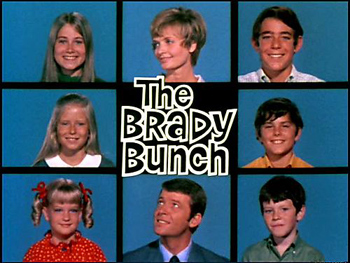As a teenager in the late 1980s I attended a three-day rock music festival that was held deep in farming country. Around a campfire with my peers one night someone suggested that we should try to name all the episodes of “The Brady Bunch” we could remember. This entertained us for well over an hour.
It was an exhilarating, magical moment for me. Here was a cultural resource that I shared with apparently absolutely everyone my own age without even having been aware of it. It was a kind of generational literacy.
But one generation passeth away, and another generation cometh. For most of the last four hundred years the common cultural currency of the English-speaking world was not the perky antics of a California blended family but the King James Version of the Bible. It appeared in 1611 and is therefore celebrating its 400th anniversary.
It was an unspeakably rich and paramount blessing that the central societal touchstone for generations was nothing less than the Word of God.
The KJV was the standard school textbook, and it was quite typical for children literally to learn to read with it. Catherine Booth, who would become famous as the co-founder of The Salvation Army, for example, had read the entire KJV eight times by the age of 12.
The words of the KJV therefore ran deep in the veins of every person. There was a mass culture that did indeed follow the directive: “And ye shall teach them your children, speaking of them when thou sittest in thine house, and when thou walkest by the way, when thou liest down, and when thou risest up” (Deuteronomy 11:19 KJV).
It was remarkably common across the religious spectrum to have daily personal and household devotions that consisted primarily of reading the KJV.
People today might think of this as usually a marker of evangelicalism, but it is apparent to me from my historical research and life experience that a higher percentage of Unitarians, Quakers or Anglo-Catholics read the Bible daily in the 19th century than even evangelicals do today.
Moreover, even those who became so disillusioned or unorthodox as to give up on corporate worship altogether often persisted in daily Bible readings.
The first serious attempt to replace the KJV -- the Revised Version, which appeared in 1885 -- met with popular resistance, leaving the KJV to continue to dominate well into the 20th century.
As denominations began to proliferate, the KJV became even more central, with religious leaders of all stripes using it to reassure people that they were just presenting what “the Bible says” and not using a new or different translation as a way of rigging a theological issue in their favor. It was simply the received text in English -- our common Bible. Hence, the British began to refer to it as the “authorized version,” to emphasize that the text had not been tampered with.
This meant that virtually all major writers and orators -- irrespective of whether they were religious -- made allusions to the text of the KJV in the confidence that their audience would grasp them.
A rakish poet such as Lord Byron, for example, was not known for his firm doctrinal convictions or his personal piety. But one of his most famous poems, “She Walks in Beauty,” was originally published in “Hebrew Melodies,” a volume of his verse that had as its unifying theme the songs and narratives of the Old Testament.
Pick up an annotated edition of any Victorian novel and you will find notes about its biblical references that the author doubtless never anticipated would need explaining. This is no less true for the agnostic George Eliot or for Charles Dickens, who disliked dogmatic Christians, than it is for more explicitly Christian authors.
Generations of American soldiers went into battle, not whistling the latest pop culture ditty, but rather reciting Psalm 91 from the KJV.
The eminent literary critic Northrop Frye spoke of the contents of the Bible as “the great code” for understanding Western art and literature. A Canadian friend of mine who attended the University of Toronto recalls that Frye would not allow students to enroll in his course on Romantic literature until they had passed a Bible knowledge test.
Not so today. Besides the “Brady Bunch” theme, another song that people in my generation know by heart is the 1985 smash hit “We Are the World.”
But we had apparently become so biblically illiterate that belting out the line “As God has shown us by turning stone to bread,” no one seemed to realize that the gospel text being evoked actually says the exact opposite: Jesus resisted the satanic temptation to turn stones into bread.
As delightful as it is to share classic TV gold with my fellow Gen Xers, it and the common pop culture currencies of subsequent generations are not up to bearing the weight of life’s most profound problems, issues and insights.
Even when they are speaking about the same subject matter, the difference in grandeur and gravitas is vast. “Till the one day when the lady met this fellow / And they knew that it was much more than a hunch” is not quite “For this cause shall a man leave his father and mother, and shall be joined unto his wife, and they two shall be one flesh” (Ephesians 5:31).
When it comes to the questions of race, war, politics, and the mixed motives and fallibility of human actions, great leaders such as Abraham Lincoln turned to the KJV.
He powerfully drew upon Mark 3:25 in order to depict the nation’s perilous plight: “A house divided against itself cannot stand.”
This great orator could allude to the Bible, confident both that a thrill of recognition would go through his peers and that his words would be more than equal to the greatest of his subject matter.
And I know that it was much more than a hunch.








